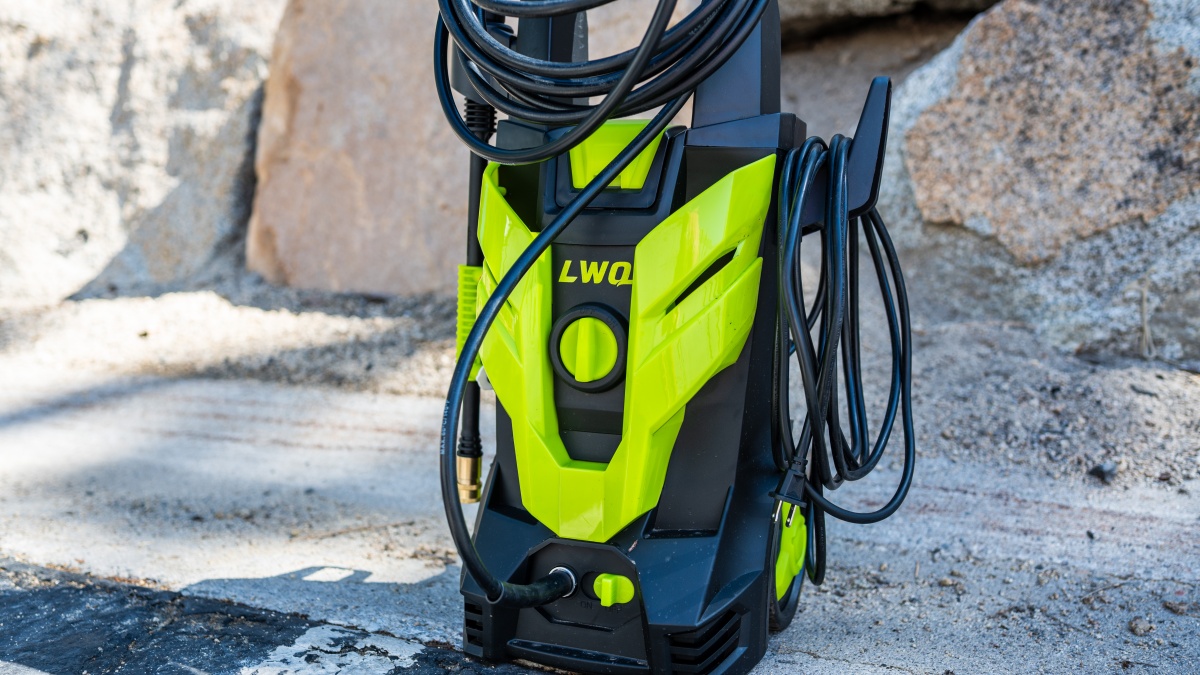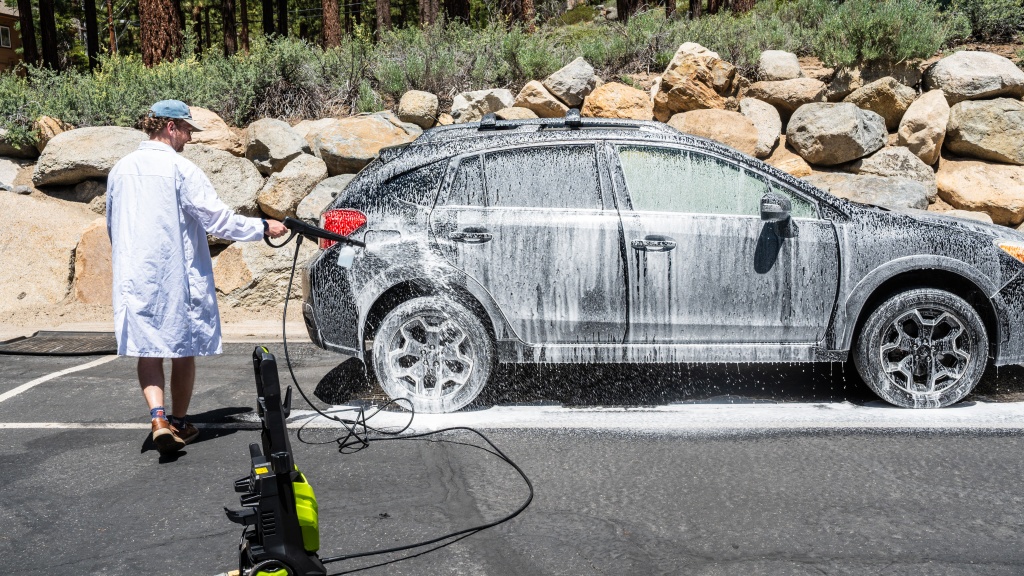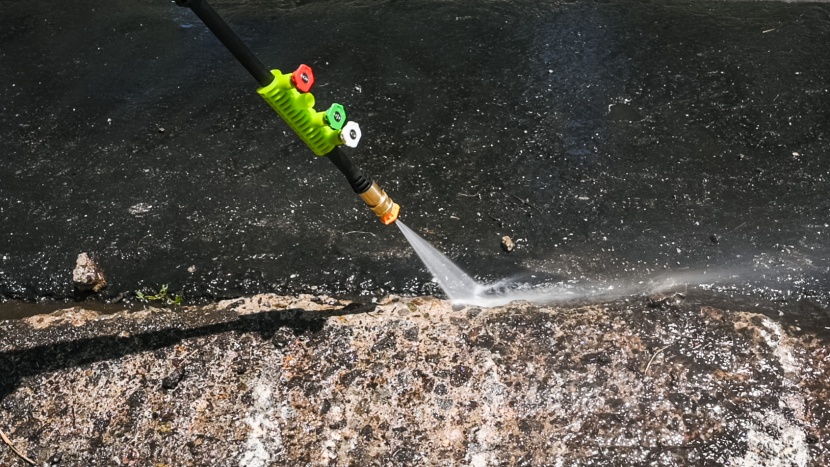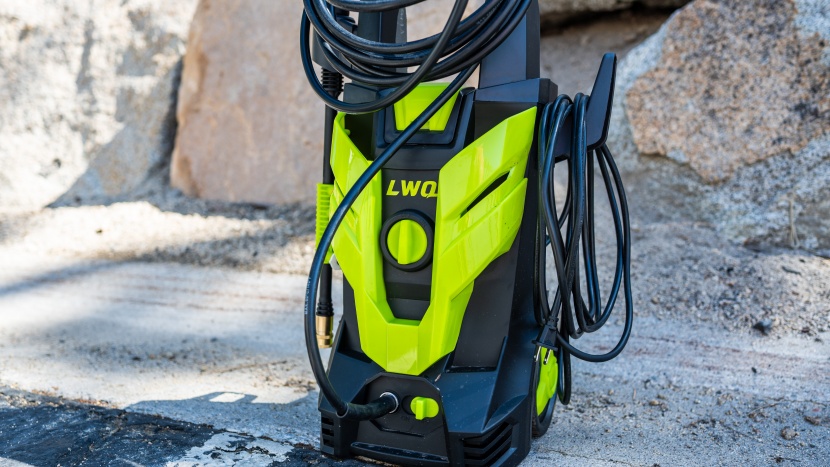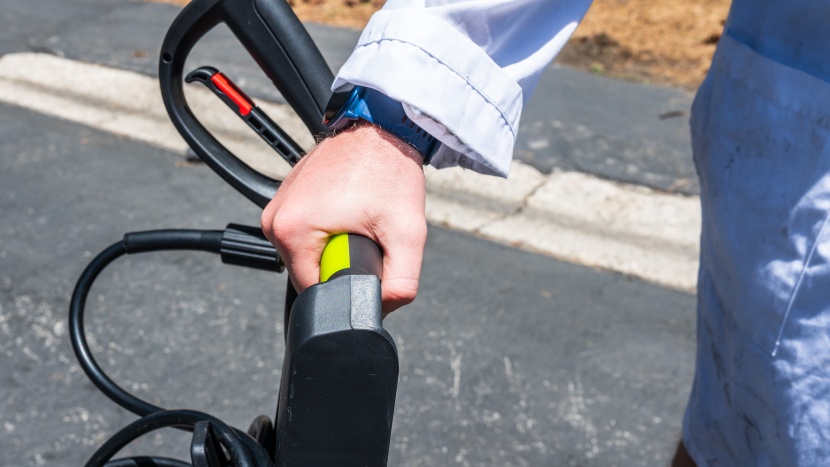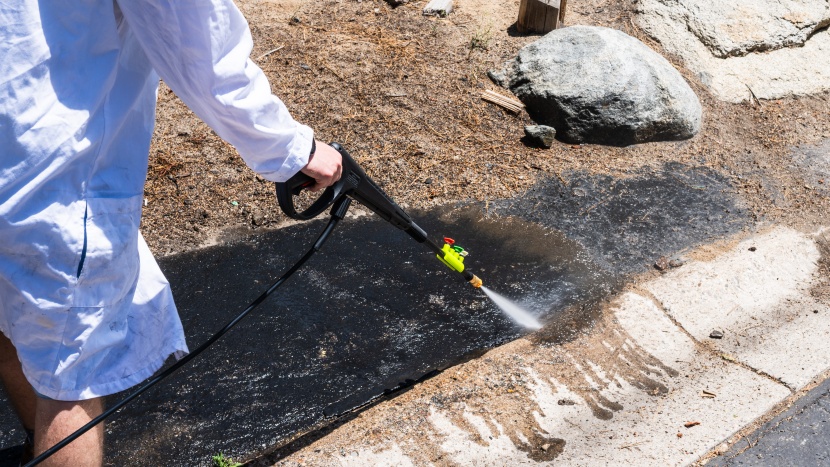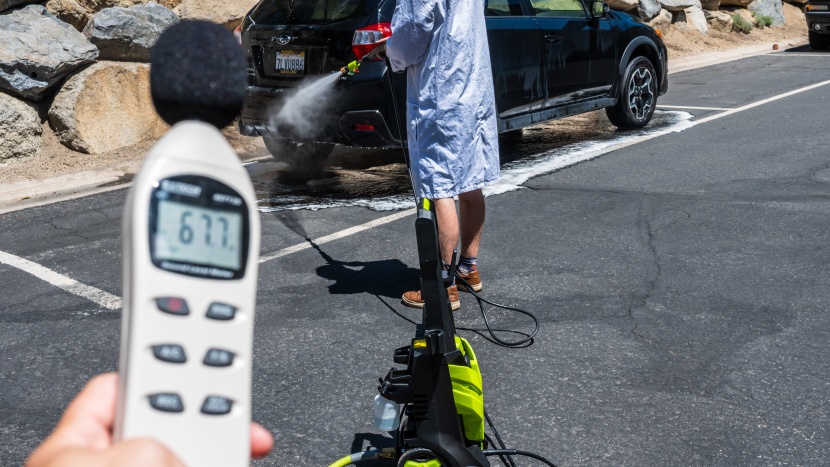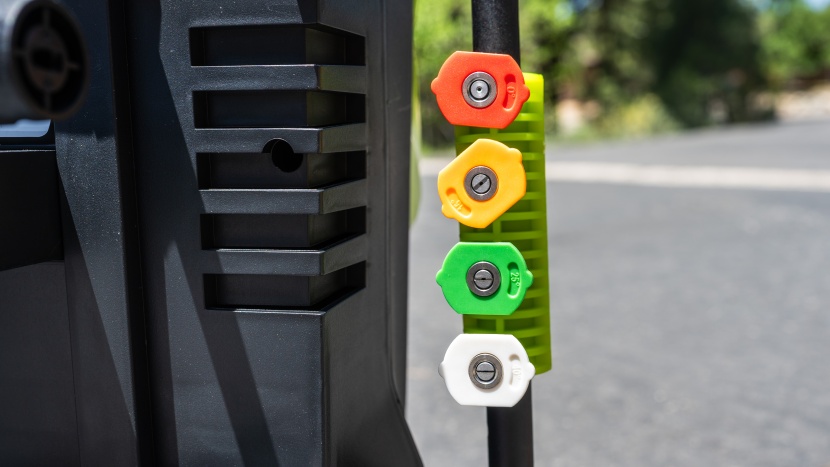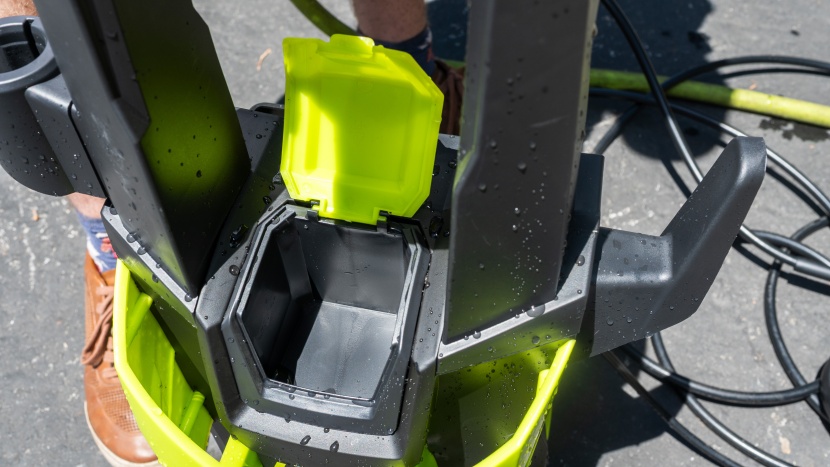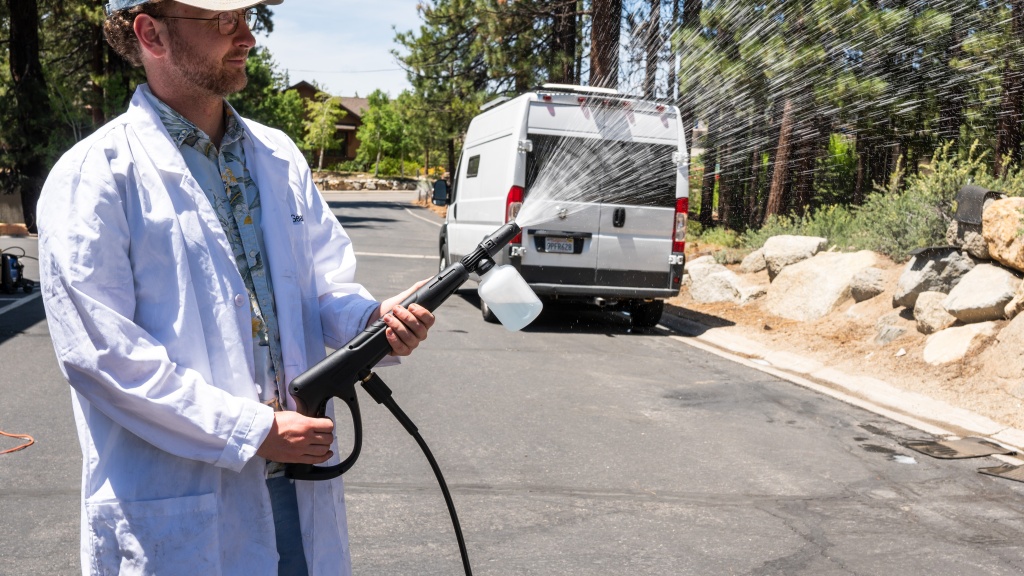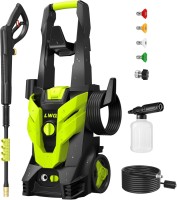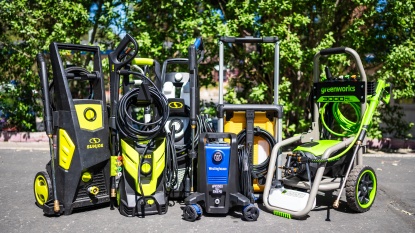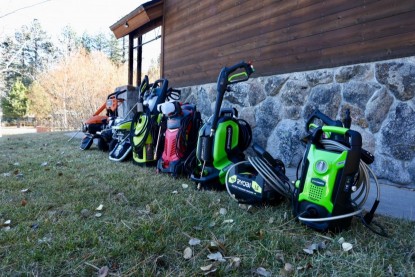
Our Verdict
Our Analysis and Test Results
When it came time to soap, clean, and rinse, there was one clear standout throughout our entire line of reviewed pressure washers: the LWQ S5. With reasonable power packed into a small, lightweight build, we could not only scour away bugs and grime but also carry and store this product with ease. This little model also comes with a foam cannon attachment, which will coat an entire car in soapy suds while still providing enough power to reach tricky nooks and crannies. If you're looking for a straightforward, portable pressure washer that will tackle medium to light tasks throughout the household, then the LWQ S5 is for you.
Cleaning
Pressure washers are built and designed with one central purpose in mind — to clean. To properly appreciate and score all our machines, we needed both objective, hard-hitting data and a series of real-life scenarios that a typical user might encounter over years of everyday use. Throughout most of these tests, the LWQ S5 consistently scrubbed its way to a top-four cleaning score.
After weighing and performing some conversions, we measured the highest flow rate of any electric unit we tested at 1.31 gpm — this little machine spews out a significant amount of water.
Next, we needed to work out how much pressure this little machine could generate, so we attached a psi gauge to the end of our line and smashed the trigger to coax out the most power possible.
Once we recorded a pressure of 1500 psi, we crunched the numbers, and the LWQ S5 scored a respectable 1962 CU. This was relatively average compared to the rest of the field, yet it outperformed many other electric pressure washers we tested.
Once the LWQ was released upon our “trough” test, we found that it was running in the middle of the pack by holding the ball 3.25 feet from the end of the nozzle.
To our pleasant surprise, the LWQ began to display its best cleaning qualities, one of which is a provided foam cannon. We replaced the gun wand with this soapy accouterment, filled the bottle, and pulled the trigger. Once depressed, this little washer spewed out enough suds to not only effectively coat the car but absolutely douse it. In addition to a dazzling detergent dispenser, there are 0-degree, 15-degree, 25-degree, and 40-degree nozzles covering a range of cleaning needs in terms of effective spray area and power.
Portability
When it comes to any large home tool or appliance, its weight, size, and stowage characteristics are all factors that can make a good product into a great one. That's why it's essential to assign a weight to our Portability metric by allocating 30% of the total scores. Fortunately, the LWQ S5 was prepared for this metric; however, to evaluate and score this washer appropriately, we put it through its paces. We tested every unit by weighing, measuring, loading and unloading, rolling along varied terrain, and noting how well it stored at the end of a job.
We were pleased by how lightweight the LWQ turned out to be. At 16.8 pounds, this was by far the lightest pressure washer, and we could nearly chuck it onto the top shelf of a storage rack. It also measured the smallest in our lineup at just 10 inches deep by 10 inches wide and 33 inches tall. This gives a total volume of 1.9 cubic feet, which permits this miniature unit to be stored nearly anywhere with ease.
Despite its small volume, we found problems arose when we actually rolled it on anything other than flat pavement or concrete. The six-inch plastic wheels catch on uneven ground, and no matter how we push or pull, it is downright awkward to drag around. That being said, we did find some joy in being able to carry the LWQ whenever the terrain got too rough for painless rolling.
Once we finished using the LWQ, it was a breeze to carry to the following job site or lift into a car, further adding to its high portability. The cords and hose were a bit haphazard after several uses. They began to take up more space, but that's a natural part of using and owning a pressure washer. We still wholeheartedly recommend this pressure washer to anyone who has a hard time lifting heavy objects.
Noise
As with most home tools, pressure washers produce a significant amount of noise.
The readings we collected from right next to the LWQ S5 weren't anything that could potentially damage your hearing, but the 82 decibels came with a sound that encouraged the use of ear protection for anything that wasn't a quick job. After stepping back to 25 feet, we were relieved by a steep drop in intensity of just 68.2 decibels.
This particular machine emits a constant, high-pitched hissing sound but doesn't produce any major clicks, bumps, or pumps typically associated with gas models. However, it does create consistent noise and scores slightly lower in our noise metric compared to other models.
Ease Of Use
As with any home or yard tool, the ease or difficulty of setup and use can turn a swift job into an all-day affair, especially in cases where assembly is required.
No matter which pressure washer you choose from our lineup of reviews, everyone requires some assembly. Regrettably, when we opened the LWQ S5 box, we were greeted by a pile of pieces, and it took us the most time to build. Additionally, the entire experience of balancing and rolling this pressure washer was uncomfortable. It often clipped our heels and tipped over easily when knocked or yanked by the hose. After multiple uses, we also noticed a massive concern regarding longevity. The inlet hose is at ground level on the back of the unit, so after long-term use, the hose inlet connector and the hose itself began to deteriorate due to contact with the ground.
The LWQ does have a couple of bonus features, like a nozzle holder on the wand attachment and a small storage compartment on the top for extra nozzle attachments, parts, snacks, or car keys. We were disappointed to discover that this is the only washer in our entire lineup that lacks a circuit breaker integrated into its power cord.
This cable is also short, at 19 feet, and its included hose is by far the smallest throughout our lineup, measuring only 16.5 feet. It's not a problem for someone with a single-car driveway, but it's definitely a limiting factor for someone with larger projects.
Whether or not these are deal breakers for you, our entire testing team loved how many small spaces this little power washer can store in. By having such a small cord and hose, they were easier to coil and store than most on the LWQ's two provided hooks.
Should You Buy the LWQ S5?
This pressure washer is a true game changer when it comes to combining portability with a range of cleaning uses. Its included soap cannon had our testers smiling like kids while performing a vehicle washdown, and it is the lightest option throughout the entire lineup, further adding to its on-the-move efficacy. As our smallest unit tested, the LWQ S5 not only weighs in as a featherweight but also packs a disproportionate amount of power by producing high flow and utilizing minimal pressure, resulting in explosive cleaning prowess.
What Other Pressure Washers Should You Consider?
While having a good CU count, there are many more rugged machines that we tested, such as the similar corded electric Greenworks GPW3002. It has a heavy-duty frame and produces 2675 CU, over 675 CU more than any other electric washer we reviewed. If you need more power, you can opt for a traditional gas engine model, such as the Simpson CM61083 or Westinghouse WPX3200, which generates 4000 to 6000 CU. Alternatively, if you don't require maximum power and want a highly portable pressure washer, the Dewalt DWPW2100 is by far the most sophisticated option among our tested lineup. It comes in a cube shape with a heavy-duty frame, and every piece needed fits neatly inside its integrated engine/storage design.
| Awards | Best For Vehicles |
|---|---|
| Price | $200 List Check Amazon (on sale!) |
Overall Score  |
|
| Star Rating | |
| Bottom Line | This miniature ultralight washer can be easily transported and is the sudsiest and soapiest power washer once you attach its included foam cannon |
| Pros | Supreme soapability, lightest option available, foam cannon included |
| Cons | Short hose and cord length, poor ergonomics, most assembly required |
| Rating Categories | LWQ S5 |
| Cleaning (45%) | |
| Portability (30%) | |
| Noise (15%) | |
| Ease of Use (10%) | |
| Specifications | LWQ S5 |
| Measured Pressure | 1500 psi |
| Electric or Gas | Electric |
| Measured Flow | 1.31 gpm |
| Measured Cleaning Units | 1962 |
| Measured Distance in Bocce Ball Power Test | 3.25 feet |
| Measured Decibels at Machine | 82.0 dB |
| Measured Weight | 16.8 lbs |
| Measured Electrical Cord Length | 16.5 feet |
| Overall Size | 33" x 10" x 10" |
| Volume of unit | 1.9 cubic feet |
| Measured Length of Hose | 19 feet |
| Nozzles Available | 0, 15, 25, 40, soap |
| Manufacturer Pressure | 2,030 psi |
| Manufacturer Flow | 2.5 gpm |
| Wheels | 6" Plastic Wheels |


